Top Rankings
Smoky Valley School District ranks among the top 20% of public school district in Kansas for:
Category
Attribute
Graduation Rate
Highest graduation rate (Top 10%)
For the 2025 school year, there is 1 public preschool serving 298 students in Smoky Valley School District. This district's average pre testing ranking is 9/10, which is in the top 20% of public pre schools in Kansas.
Public Preschool in Smoky Valley School District have an average math proficiency score of 57% (versus the Kansas public pre school average of 38%), and reading proficiency score of 47% (versus the 40% statewide average).
Minority enrollment is 16% of the student body (majority Hispanic), which is less than the Kansas public preschool average of 36% (majority Hispanic).
Overview
This School District
This State (KS)
# Schools
4 Schools
563 Schools
# Students
1,173 Students
175,366 Students
# Teachers
56 Teachers
12,675 Teachers
Student : Teacher Ratio
14:1
14:1
District Rank
Smoky Valley School District, which is ranked within the top 50% of all 286 school districts in Kansas (based off of combined math and reading proficiency testing data) for the 2021-2022 school year.
The school district's graduation rate of 90-94% has stayed relatively flat over five school years.
Overall District Rank
#132 out of 286 school districts
(Top 50%)
(Top 50%)
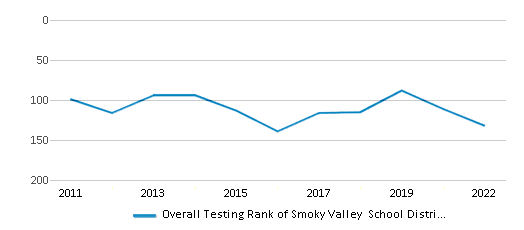
Math Test Scores (% Proficient)
29%
29%
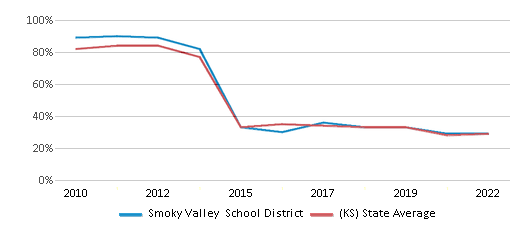
Reading/Language Arts Test Scores (% Proficient)
32%
32%
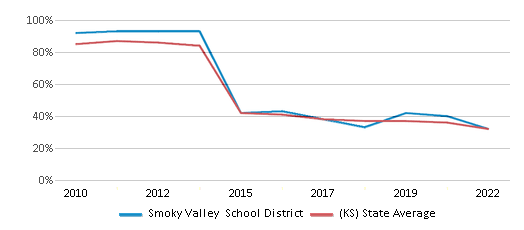
Science Test Scores (% Proficient)
33%
31%

Graduation Rate
90-94%
89%
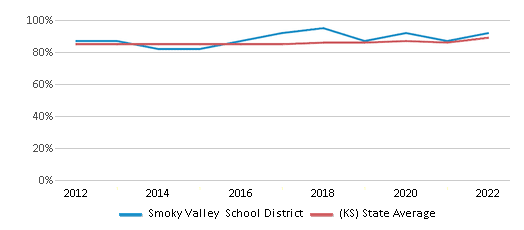
Students by Ethnicity:
Diversity Score
0.24
0.55
# American Indian Students
3 Students
1,258 Students
% American Indian Students
n/a
1%
# Asian Students
9 Students
3,742 Students
% Asian Students
1%
2%
# Hispanic Students
102 Students
35,106 Students
% Hispanic Students
9%
20%
# Black Students
12 Students
10,873 Students
% Black Students
1%
6%
# White Students
1,019 Students
112,046 Students
% White Students
87%
64%
# Hawaiian Students
n/a
394 Students
% Hawaiian Students
n/a
n/a
# Two or more races Students
28 Students
11,947 Students
% of Two or more races Students
2%
7%
Students by Grade:
# Students in PK Grade:
51
21,709
# Students in K Grade:
50
25,257
# Students in 1st Grade:
56
25,383
# Students in 2nd Grade:
81
25,757
# Students in 3rd Grade:
87
23,472
# Students in 4th Grade:
97
23,284
# Students in 5th Grade:
103
21,197
# Students in 6th Grade:
93
6,799
# Students in 7th Grade:
68
1,086
# Students in 8th Grade:
75
1,161
# Students in 9th Grade:
87
56
# Students in 10th Grade:
112
66
# Students in 11th Grade:
104
65
# Students in 12th Grade:
100
74
# Ungraded Students:
9
-
District Revenue and Spending
The revenue/student of $11,014 in this school district is less than the state median of $16,276. The school district revenue/student has grown by 7% over four school years.
The school district's spending/student of $10,905 is less than the state median of $17,192. The school district spending/student has grown by 7% over four school years.
Total Revenue
$13 MM
$7,774 MM

Spending
$13 MM
$8,211 MM
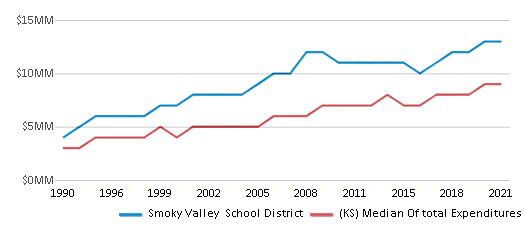
Revenue / Student
$11,014
$16,276
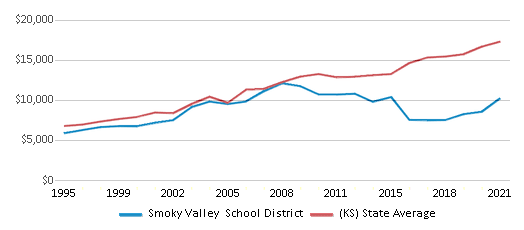
Spending / Student
$10,905
$17,192
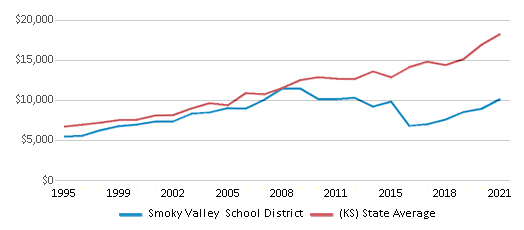
Best Smoky Valley School District Public Preschools (2025)
School
(Math and Reading Proficiency)
(Math and Reading Proficiency)
Location
Grades
Students
Rank: #11.
Soderstrom Elementary School
(Math: 55-59% | Reading: 45-49%)
Rank:
Rank:
9/
Top 20%10
227 N Washington
Lindsborg, KS 67456
(785) 227-2945
Lindsborg, KS 67456
(785) 227-2945
Grades: PK-4
| 298 students
Recent Articles

Year-Round Or Traditional Schedule?
Which is more appropriate for your child? A year-round attendance schedule or traditional schedule? We look at the pros and cons.

Why You Should Encourage Your Child to Join a Sports Team
Participating in team sports has a great many benefits for children, there is no doubt. In this article you will learn what those benefits are.

White Students are Now the Minority in U.S. 九游体育s
Increasing birth rates among immigrant families from Asia and Central and South America, combined with lower birth rates among white families, means that for the first time in history, public school students in the United States are majority-minority. This shift in demographics poses difficulties for schools as they work to accommodate children of varying language abilities and socio-economic backgrounds.





